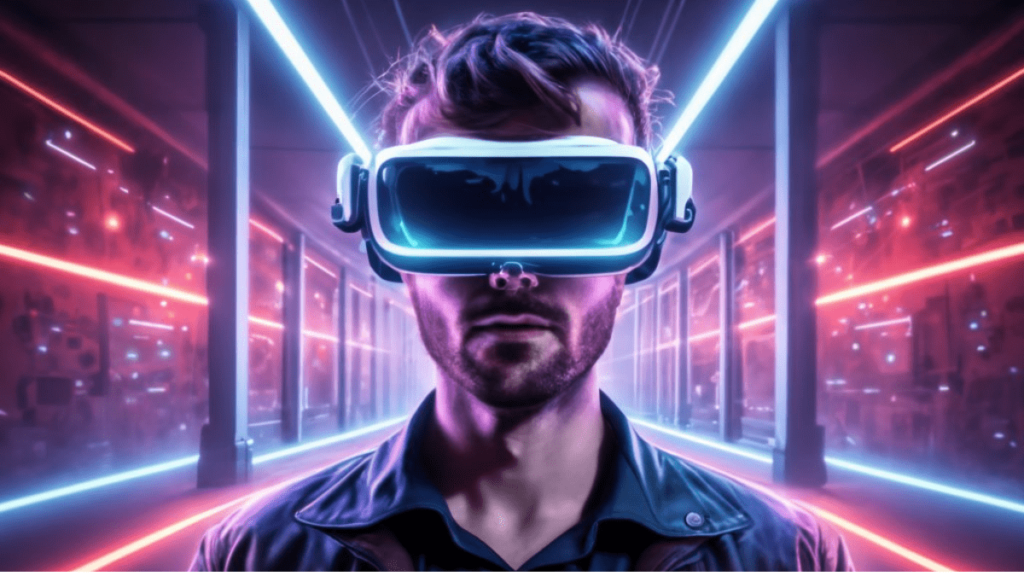Virtual Reality (VR) has emerged as one of the most transformative technologies of the 21st century, offering immersive and interactive experiences that transcend the boundaries of traditional media. From gaming and entertainment to education and healthcare, VR has the potential to revolutionize countless industries and reshape the way we interact with digital content. In this blog post, we’ll take a closer look at the fascinating world of virtual reality, exploring its applications, advancements, and the impact it’s poised to have on our future.
Table of Contents
Understanding Virtual Reality
At its core, virtual reality refers to a simulated environment that is experienced through sensory stimuli (such as sight and sound) generated by a computer. Unlike traditional forms of media that are viewed on a screen, VR immerses users in a three-dimensional, interactive environment, often using specialized hardware such as VR headsets and motion controllers to enhance the experience.
Key Components of Virtual Reality
- Head-Mounted Display (HMD): The centerpiece of any VR setup is the head-mounted display, or VR headset, which users wear to immerse themselves in virtual environments. Modern VR headsets, such as the Oculus Rift, HTC Vive, and PlayStation VR, feature high-resolution displays, built-in motion tracking, and ergonomic designs that enhance comfort and immersion.
- Motion Tracking: Motion tracking technology allows VR systems to accurately track the movements of users’ heads and hands, enabling natural and intuitive interaction within virtual environments. This technology is essential for creating a sense of presence and immersion in VR experiences.
- Input Devices: In addition to head-mounted displays, VR often requires specialized input devices such as motion controllers or gamepads to facilitate interaction within virtual environments. These input devices allow users to manipulate objects, navigate virtual spaces, and engage with virtual content in meaningful ways.
Applications of Virtual Reality
- Gaming and Entertainment: Perhaps the most well-known application of VR is in gaming and entertainment, where it offers unparalleled immersion and interactivity. From immersive virtual worlds to adrenaline-pumping action experiences, VR gaming transports players to new realms of adventure and excitement.
- Education and Training: Virtual reality has immense potential in education and training, allowing students and professionals to explore realistic simulations and interactive learning environments. VR can be used to simulate historical events, conduct virtual field trips, and provide hands-on training in fields such as medicine, engineering, and aviation.
- Healthcare and Therapy: In healthcare, VR is being used to revolutionize patient care, offering innovative solutions for pain management, rehabilitation, and mental health therapy. VR simulations can help patients overcome phobias, manage chronic pain, and even improve cognitive function through immersive experiences.
- Architecture and Design: Virtual reality is transforming the way architects and designers visualize and conceptualize their projects. VR enables architects to create immersive, three-dimensional models of buildings and spaces, allowing clients and stakeholders to explore and interact with designs before they’re built.
- Social Interaction and Communication: With the rise of social VR platforms like Oculus Venues and VRChat, virtual reality is becoming a new frontier for social interaction and communication. VR allows users to connect with others in virtual spaces, attend live events, and engage in shared experiences regardless of physical distance.
Future Directions and Challenges
As virtual reality continues to evolve, researchers and developers are exploring new frontiers in areas such as augmented reality (AR), mixed reality (MR), and haptic feedback technology. However, VR still faces challenges such as hardware limitations, content accessibility, and concerns about privacy and safety. Despite these challenges, the potential of virtual reality to transform industries, enhance human experiences, and unlock new realms of creativity remains unparalleled.
Virtual reality represents a bold new frontier in technology, offering immersive and interactive experiences that push the boundaries of imagination. From gaming and entertainment to education and healthcare, VR has the power to revolutionize countless industries and reshape the way we interact with digital content. As we continue to explore the possibilities of virtual reality, one thing is certain: the future of immersive technology is boundless.

